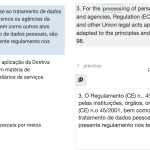This thread is resolved. Here is a description of the problem and solution.
Problem:
The client is trying to include superscripts for correct legal translations in WPML, but the Advanced Translation Editor (ATE) changes it to a normal "o". When using
<sup>o</sup>
, ATE does not allow saving and deletes the character completely.
Solution:
We informed the client that the ATE does not support the direct insertion of HTML characters unless they are included in the source text. We have an existing feature request for the ability to add or remove HTML markup in the ATE, and we have added this ticket to that request for internal tracking.
Currently, the only way to add HTML into translations is through the Classic Translation Editor, which allows for the addition of HTML tags. For more information on the Classic Translation Editor, please refer to the following guide:
As an alternative, we suggested using the Degree Symbol (°) in the ATE to achieve the desired representation in the translation.
If this solution is not relevant to your case, because it might be outdated or not applicable, we highly recommend checking related known issues at https://wpml.org/known-issues/, verifying the version of the permanent fix, and confirming that you have installed the latest versions of themes and plugins. If you still need assistance, please do not hesitate to open a new support ticket. You can reach our support forum here: WPML Support Forum.
This is the technical support forum for WPML - the multilingual WordPress plugin.
Everyone can read, but only WPML clients can post here. WPML team is replying on the forum 6 days per week, 22 hours per day.
This topic contains 3 replies, has 2 voices.
Last updated by 1 year, 6 months ago.
Assisted by: Prosenjit Barman.


